THE BOOK OF
COMMON
PRAYER
PENGUIN  CLASSICS
CLASSICS
THE BOOK OF
COMMON
PRAYER
and
Administration of the Sacraments
and other Rites and Ceremonies of the Church
according to the use of
THE CHURCH OF
ENGLAND
together with the Psalter or Psalms of David
pointed as they are to be sung or said in Churches
and the form or manner of making, ordaining and
consecrating of Bishops, Priests and Deacons
CUM PRIVILEGIO

Introduction by
J AMES W OOD
PENGUIN BOOKS
PENGUIN BOOKS
Published by the Penguin Group
Penguin Group (USA) Inc., 375 Hudson Street, New York, New York 10014, U.S.A.
Penguin Group (Canada), 90 Eglinton Avenue East, Suite 700, Toronto,
Ontario, Canada M4P 2Y3 (a division of Pearson Penguin Canada Inc.)
Penguin Books Ltd, 80 Strand, London WC2R 0RL, England
Penguin Ireland, 25 St Stephens Green, Dublin 2, Ireland
(a division of Penguin Books Ltd)
Penguin Group (Australia), 250 Camberwell Road, Camberwell,
Victoria 3124, Australia (a division of Pearson Australia Group Pty Ltd)
Penguin Books India Pvt Ltd, 11 Community Centre,
Panchsheel Park, New Delhi - 110 017, India
Penguin Group (NZ), 67 Apollo Drive, Rosedale, Auckland 0632,
New Zealand (a division of Pearson New Zealand Ltd)
Penguin Books, Rosebank Office Park, 181 Jan Smuts Avenue,
Parktown North 2193, South Africa
Penguin China, B7 Jaiming Center, 27 East Third Ring Road North,
Chaoyang District, Beijing 100020, China
Penguin Books Ltd, Registered Offices:
80 Strand, London WC2R 0RL, England
First published in Penguin Books 2012
1 3 5 7 9 10 8 6 4 2
Introduction copyright James Wood, 2012
All rights reserved
In the United Kingdom The Book of Common Prayer is protected by copyright. This edition of The Book of Common Prayer, the rights in which are vested in the Crown in the United Kingdom, is reproduced by permission of the Crowns patentee, Cambridge University Press.
LIBRARY OF CONGRESS CATALOGING-IN-PUBLICATION DATA
Church of England.
[Book of common prayer]
The Book of common prayer and administration of the sacraments and other rites and ceremonies of the Church according to the use of the Church of England : together with the Psalter or Psalms of David, pointed as they are to be sung or said in churches, and the form or manner of making, ordaining, and consecrating of bishops, priests, and deacons / introduction by James Wood.Penguin classics deluxe ed.
p. cm.
ISBN: 978-1-101-60355-0
I. Wood, James, 1965- II. Title.
BX5145.A4 2012
264.03dc23 2012025146
Printed in the United States of America
Set in Sabon
Except in the United States of America, this book is sold subject to the condition that it shall not, by way of trade or otherwise, be lent, resold, hired out, or otherwise circulated without the publishers prior consent in any form of binding or cover other than that in which it is published and without a similar condition including this condition being imposed on the subsequent purchaser.
The scanning, uploading and distribution of this book via the Internet or via any other means without the permission of the publisher is illegal and punishable by law. Please purchase only authorized electronic editions, and do not participate in or encourage electronic piracy of copyrighted materials. Your support of the authors rights is appreciated.

I NTRODUCTION
Every afternoon in England, as the shadows thicken, an ancient service called Evensong takes place in every cathedral and college chapel. Through the stained glass, the violet light outside is turning to black. Inside, candles are lit; the flickering flames dance and rest, dance and rest. Beyond this concentrated area of light, the building is empty and darkened. The choir troops in, takes its place in the carved stalls. A precentoressentially, a cantorchants: O Lord, open thou our lips. The choir breaks into song: And our mouth shall shew forth thy praise. The precentor continues: O God, make speed to save us. And the choir replies, musically: O Lord, make haste to help us.
And so begins a service whose roots stretch as far back as the tenth century, and whose liturgy has been in almost continuous use since 1549, the date of the first Book of Common Prayer, which was revised in 1552, and lightly amended in 1662, three hundred and fifty years ago. The Book of Common Prayer was the first comprehensive compendium of worship in English. The words, or at least many of them, were written by Thomas Cranmer, Archbishop of Canterbury between 1533 and 1556. Thomas Cranmer did not cut his text from whole cloth: in the ecumenical spirit that characterizes the Book of Common Prayer, he went to the Latin liturgy that the English Catholic Church had used for centuries. At Salisbury Cathedral, a book known as the Sarum Missal had long been employed by priests to help them conduct services. It contained a calendar of festivals, along with prayers and readings for those festivals; and it held orders of service for Morning Prayer, Evening Prayer, and the Mass.
Popular as the Missal was, it was a handbook for priests and monks, not for the laity, and its language was Latin, not English. Cranmer wanted a prayer book in English, one that could be understood by ordinary people, even by those who could not read. To this end, he translated a good deal of the Sarum Missal: from the monastic services of Matins, Vespers, and Compline, he fashioned the Morning Prayer and Evening Prayer (commonly known now as Evensong) that are familiar to millions of members of the worldwide Anglican Church. He also borrowed elements of the liturgy of the Reformed Church in Cologne, and adapted a prayer of St. John Chrysostom from the Byzantine rite. He wrote scores of new prayers and collects, in a language at once grand and simple, heightened and practical, archaic and timeless. Almost certainly, Thomas Cranmer, a Cambridge scholar (he had held a lectureship in biblical studies) and a diplomat, did not imagine he was writing one of the great, abiding works of English literature, what the historian Diarmaid MacCulloch calls one of a handful of texts to have decided the future of a world language. (MacCulloch includes the English Bible of Coverdale and Tyndalethe forerunner of the King James Bibleand the works of Shakespeare in that group.)to each other: to have and to hold from this day forward, for better for worse, for richer for poorer, in sickness and in health, to love and to cherish, till death us do part, according to Gods holy ordinance; and thereto I plight thee my troth. The words of the burial service have become proverbial:
In the midst of life we are in death. Thou knowest, Lord, the secrets of our hearts; shut not thy merciful ears to our prayer; but spare us, Lord most holy. Earth to earth, ashes to ashes, dust to dust; in sure and certain hope of the Resurrection to eternal life, through our Lord Jesus Christ; who shall change our vile body, that it may be like unto his glorious body.
Despite the quality of language that strikes us nowadays as majestic, grandly alienated, perhaps what is most notable about the words of the Prayer Book are their simplicity and directness. C. S. Lewis called this pithiness; I would add coziness or comfortability. The Prayer Book was a handbook of worship for a people, not for a priesthood, and its job was to replace and improve, without entirely abolishing, those ancient collective rites of worship that bound people together in the English Catholic Church. The marriage service, for instance, was a medieval liturgy that long predated the final form it found in the Book of Common Prayer. For centuries people had been plighting their troth in words not dissimilar to Cranmers. It availed Cranmer nothing to invent a liturgy that threw out that history and erected, by force of rhetorical grandeur, a verbal screen or altar between the priest and his congregation. Though there is a theological sternness to Cranmers prayers, there is also an approachability about them; ordinary phrases and familiar biblical similes are employed. Here is the general confession, the collective prayer that opens the service of Morning Prayer:

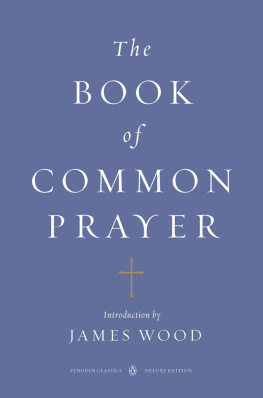
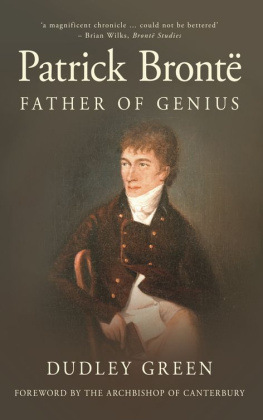
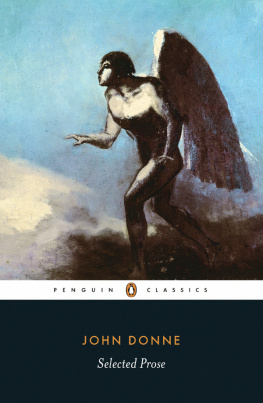

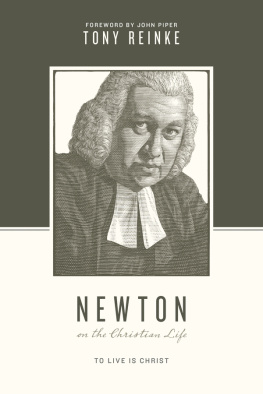

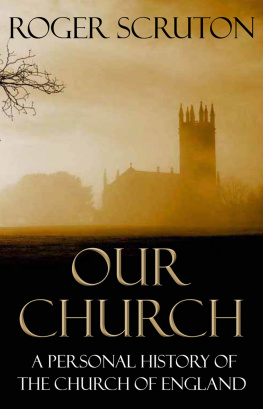
![The Standing Commission on Liturgy and Music - Daily Prayer for All Seasons [English Edition]](/uploads/posts/book/411072/thumbs/the-standing-commission-on-liturgy-and-music.jpg)
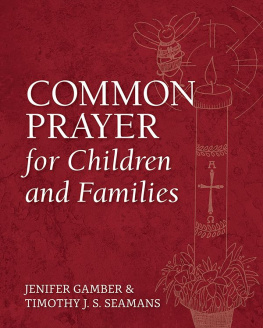
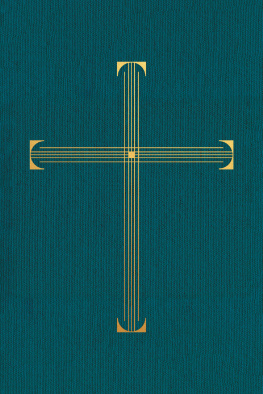
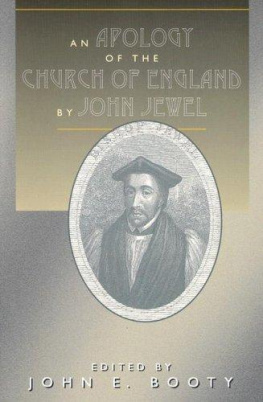
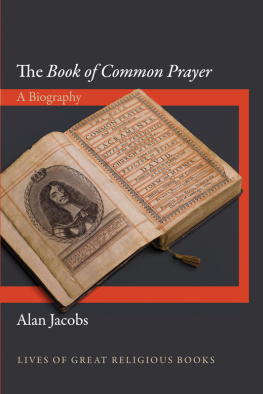

 CLASSICS
CLASSICS
